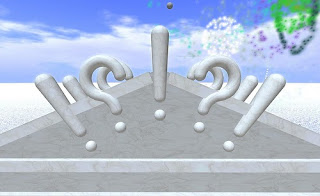Self-Editing Part V: Eight Sentence Patterns
Okay, back to my fascinating series on self-editing. Stop yawning in the back of the class. We are still looking at those pesky commas, but we are stepping back and getting some sense of context.
Once you understand a bit about what kind of sentence you have, the punctuation and why it is there makes more sense.
Just a note. This is not original with me. I did most of my research at The OWL (Online Writing Lab) at Purdue University Website. This is a fabulous resource for all writers, even though the emphasis is on academic writing. Navigation is a bit tricky, but perseverance will pay off. The article related to this subject is found here.
A simple sentence has a single subject and verb followed by either a direct object (that which the verb acts upon) or a prepositional phrase. This is also known as an "independent" clause because it can stand alone as a sentence. Sometimes independent clauses can be used as parts of other sentences.
The nice thing about a simple sentence is that, aside from a period, question mark or exclamation point at the end, you don't need any punctuation at all.
Examples:
John hit the ball.
John swung at the ball.
John hit the ball over the fence.
Where did John hit the ball?
Next to the simple sentence, the compound sentence is the easiest to understand. Basically, you take two sentences, each of which could stand alone, and stick them together using one of the following words:
Once you understand a bit about what kind of sentence you have, the punctuation and why it is there makes more sense.
 |
| Photo by Torley |
Just a note. This is not original with me. I did most of my research at The OWL (Online Writing Lab) at Purdue University Website. This is a fabulous resource for all writers, even though the emphasis is on academic writing. Navigation is a bit tricky, but perseverance will pay off. The article related to this subject is found here.
Pattern One: Simple Sentence
Independent clause[.]
The nice thing about a simple sentence is that, aside from a period, question mark or exclamation point at the end, you don't need any punctuation at all.
Examples:
Simple declarative sentence or one that states something as a fact.
John hit the ball.
Simple declarative sentence with prepositional phrase
John swung at the ball.
Simple declarative sentence with a direct object followed by a prepositional phrase.
John hit the ball over the fence.
Simple question.
Where did John hit the ball?
Pattern Two: Compound Sentence (Coordinating Conjunction)
Independent Clause[,] Coordinating Conjunction Independent Clause
Next to the simple sentence, the compound sentence is the easiest to understand. Basically, you take two sentences, each of which could stand alone, and stick them together using one of the following words:
and
or
but
for
or
nor
so
yet
Notice that several words frequently used as conjunctions are not included such as "however" and "therefore." Those are called independent markers and are handled differently. We will talk about them later.
Example:
John hit the ball over the fence, and he listened to the cheers of the crowd.
Pattern Three: Compound Sentence (Semicolon)
Independent Clause[;] Independent Clause
This one is not as popular as it used to be, however, it is the cure for the dreaded comma splice. Okay, you are scratching your heads saying, "I remember my English teacher writing that on my paper, and I never did understand it."
It's really rather simple, but, honestly, the explanations have not always been the best.
A comma splice is where you try to put together two sentences using only a comma between them. Think about the word "splice." I come from a radio background. Back in the day we "spliced" together pieces of audio tape. We literally stuck two pieces of a recording together using a fancy version of cellophane tape. Okay, now you know how old I really am. But stay with me a bit. If I only used a piece of tape half as wide, it would not have held.
Think about the comma as the bottom half of the splicing tape. The dot above it as the top half. A dot above a comma is a semicolon. I see the light bulbs going on right now. The comma doesn't have enough grammatical strength to hold together two sentences without the help of a coordinating conjunction, but a semicolon does.
Example:
John hit the ball; it flew over the centerfield fence.
Pattern Four: Compound Sentence (Independent Marker)
Independent clause[;] independent marker[,] independent clause[.]
An independent marker is simply a connecting word that introduces a sentence. It can introduce that sentence as a standalone sentence or as part of an independent clause in a compound sentence.
Some common independent markers include:
therefore
however
moreover
thus
consequently
also
Don't think about these words as conjunctions (like "and"). Think about them as the first word of a new sentence. Therefore, if the second clause begins with one of these words, you need a semicolon instead of a comma preceding it. Since these words, used in the middle of a sentence, need commas on both sides, a comma needs to follow it when it appears at the beginning of a sentence.
Example:
John hit the ball over the centerfield fence; however, his steroid use made him ineligible for MVP.
Just a note here. I'm not one to say that "And," "but," or any of the other coordinating conjunctions are not to be used to begin a sentence. Sometimes, they make the most sense. However, when you see one at the beginning of a sentence consider replacing it with an independent marker.
Okay, I can see your eyes starting to glaze over. We'll deal with the other four sentence patterns later this weekend.

Comments
Post a Comment